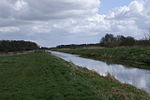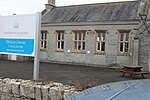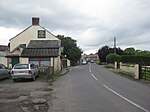Shapwick Hoard
1998 archaeological discoveries1998 in EnglandHistory of SomersetHoards from Roman BritainMetal detecting finds in England ... and 2 more
Treasure troves in EnglandTreasure troves of Roman Britain

The Shapwick Hoard is a hoard of 9,262 Roman coins found at Shapwick, Somerset, England in September 1998. The coins dated from as early as 31–30 BC up until 224 AD. The hoard also notably contained two rare coins which had not been discovered in Britain before, and the largest number of silver denarii ever found in Britain.
Excerpt from the Wikipedia article Shapwick Hoard (License: CC BY-SA 3.0, Authors, Images).Shapwick Hoard
Addermead Lane,
Geographical coordinates (GPS) Address Nearby Places Show on map
Geographical coordinates (GPS)
| Latitude | Longitude |
|---|---|
| N 51.1517 ° | E -2.8238 ° |
Address
Addermead Lane
Addermead Lane
TA7 9NW
England, United Kingdom
Open on Google Maps










